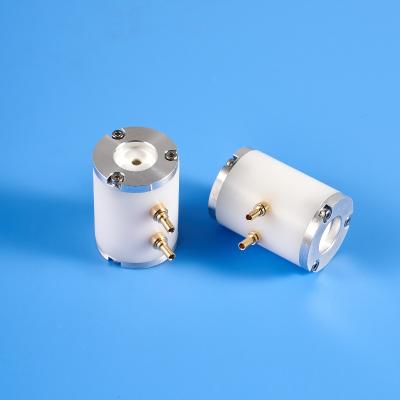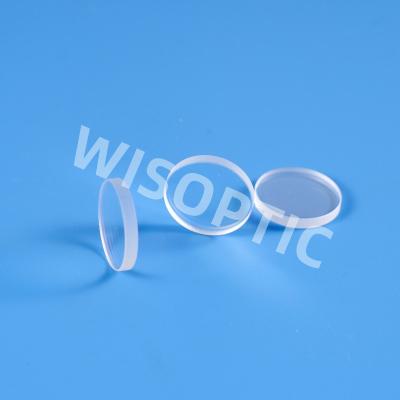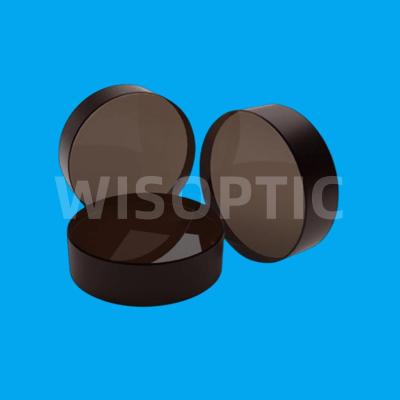Lithium Tantalate Crystal and Its Application - 08
3 The main application of lithium tantalate crystal
3.1 SAW Wave filter
Peng et al. used ion etching to process lithium tantalate (LT) crystals to obtain a high fundamental frequency crystal resonator. They used this crystal resonator to design a high-frequency broadband filter, which improved the operating frequency and reliability of the filter and increased the number of The bandwidth of the filter ensures the high temperature stability and low insertion loss of the filter. The test results of this filter show that the lithium tantalate crystal processed by ion etching can increase the upper limit of the filter's operating frequency. If the ion etching process is applied to a nanometer-level lithium tantalate crystal film with a frequency greater than 2GHz, a single-crystal thin-film bulk acoustic wave resonator with a large bandwidth and a good temperature coefficient can be prepared. Zhang et al. optimized the ion etching process and used intermittent ion beam etching to process lithium tantalate crystals, which avoided the problem of micro-cracks in the etching area and successfully reduced the thickness of the wafer from 60 μm to 30μm. A high fundamental frequency broadband lithium tantalate crystal filter with a center frequency of 70MHz and a 3dB bandwidth of 1109kHz was prepared through this wafer. Cao Yang made SAW filters by using screen printing technology and ink-jet printing on three materials: quartz, lithium niobate crystal (LN crystal, www.wisoptic.com) and lithium tantalate crystal. After the preparation was completed, its piezoelectric characteristics were compared and the filter performance was tested at the same time. Through testing the morphology and electrical performance of the filter, the results show that the SAW filter prepared using lithium niobate and lithium tantalate as piezoelectric substrates can meet the needs of use. Ruby et al. developed a new type of silicon SAW filter by bonding lithium tantalate to the silicon-based hybrid substrate, which provides temperature compensation, good power handling performance, and eliminates spurious modes generated between the LT/Si interface. One of the advantages of this technology is that as many filters as possible can be integrated onto a single mold, which exhibits the inherent performance of high-quality temperature compensated surface acoustic waves and saves both cost and area. Wu et al. studied a shear horizontal surface acoustic wave device with excellent temperature stability and low loss on an ultra-thin Y42°-oriented lithium tantalate film on a sapphire substrate, with a resonant frequency of 1.76~3.17GHz and the effective electromechanical coupling coefficient is 5.1% ~ 7.6%. The filter with a center frequency of 3.26GHz has a spurious passband suppression, a 3dB bandwidth of 3% and a minimum insertion loss of 2.39dB. In addition, coplanar waveguides and SAW resonators constructed on lithium tantalate films and lithium tantalate substrates were compared at 25°C to 150°C. After testing, at 150°C, the impedance of the lithium tantalate film filter attenuated to 3.7dB, while the impedance attenuation of the lithium tantalate substrate filter reached 9.6dB, indicating that the lithium tantalate film filter substrate has excellent radio frequency performance under various temperature.
The resonator is the basic unit of the filter, and its performance has a great impact on the performance of the filter. As communication terminals have higher and higher performance requirements for filters, resonator-type SAW filters are widely used because they can solve problems such as small size, low power consumption, and low insertion loss. The basic circuit component of the resonator-type SAW filter is the resonator. The SAW excited by the interdigital transducer reflects back and forth between the two reflection gratings to form resonance. By adjusting the resonant frequency and anti-resonant frequency of the resonator, a low-pass filter, a high-pass filter, a band-pass filter, or a band-stop filter all can be obtained. The resonator can increase the resonant frequency and center frequency of the filter and reduce the out-of-band suppression of the filter. The operating frequency of the resonator-type SAW filter is generally 10MHz~1GHz, and the insertion loss is 1~5dB.



